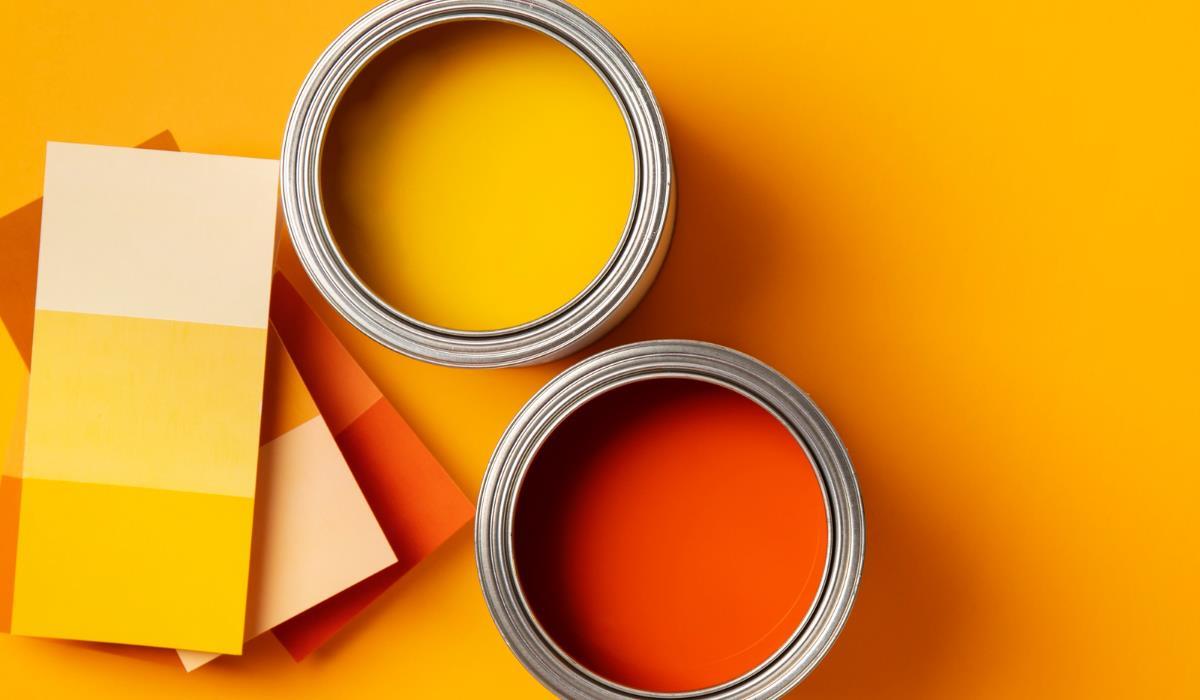Wall paint and ceiling paint are not the same. Many people unknowingly switch these paints, but only because they do not realize how different they are from each other. Painting a room requires two types of paint – each has its own characteristics that distinguish it from the other. Painting the walls and ceiling in the same color is one of the most common questions that arise when painting walls during home renovation. This article will answer this question so that you know what to do to give your rooms a fresh look.
Ceiling paint is designed for painting ceilings where one coat is enough to cover imperfections. Due to its thickness, there is no problem with splashing. The white paint gives the rooms extra depth as most ceilings are painted flat white. The white color is also used on the finishing strips. If you want to mask scratches on the moldings, use a higher-gloss paint. In rooms with high ceilings, it is a good idea to paint the walls the same color as the ceiling.
Wall paint and ceiling paint – differences
Just as there are differences between a ceiling and a wall, there are also differences between the types of paint that cover these surfaces.
ceiling paint:
It is a paint with a thicker consistency, based on latex. Its finish can be flat or have a low gloss. What’s more, this paint is stain and mildew resistant. It can be easily used to paint walls.
Wall paint:
This paint has a low viscosity which means it is thinner and more fluid in consistency. It is also thinner than typical paint. Due to this low density, it is more likely to splash when applied compared to paints specifically designed for ceilings. Due to these properties, it is not recommended to paint ceilings with it, where splashes can be particularly difficult to remove and may lead to undesirable visual effects.
The best paint for ceilings

Color changing ceiling paint
Thanks to the technology used, which changes color during application, this paint, drying quickly, perfectly masks any surface imperfections, minimizing surface defects. It is perfect for painting both ceilings with different textures. Its unique self-priming properties eliminate the need for an additional primer before painting. The advantages include ease of application, excellent coverage of stains with one layer and durability after drying. However, it has limited effectiveness on all types of surfaces. Paint with the ability to change color during painting is an effective solution to masking unevenness and ensuring a lasting effect. Unfortunately, it is not always ideal for all substrates.
Ceiling latex paint
Latex ceiling paint is distinguished by a transparent finish, accelerating the pace of work. Its resistance to splashing is a significant advantage. After drying, it takes on a delicate, gray shade that effectively masks any surface imperfections. In addition, this paint effectively covers stains, including those caused by nicotine. It is worth mentioning that the advantages include the ability to cover stains with one layer of paint and high quality customer service. However, the disadvantages are a strong paint smell and a limited film thickness which may not be suitable for some applications.
Finishing paints

This paint is distinguished by a quick drying time, allowing it to dry in just 30 minutes. Its matte finish is an effective way to hide surface imperfections. Before painting, it is recommended to prepare the surface by using 180/220 sandpaper. And also thoroughly washing it with grease remover. Among the advantages of this paint is its versatility, which works well in both indoor and outdoor projects. In addition, it has good performance on a variety of surfaces such as metal, wood, plaster and non-glazed ceramics. Nevertheless, the disadvantages include the fact that the paint does not always adhere equally well to all types of substrate, which is worth considering when using it.



